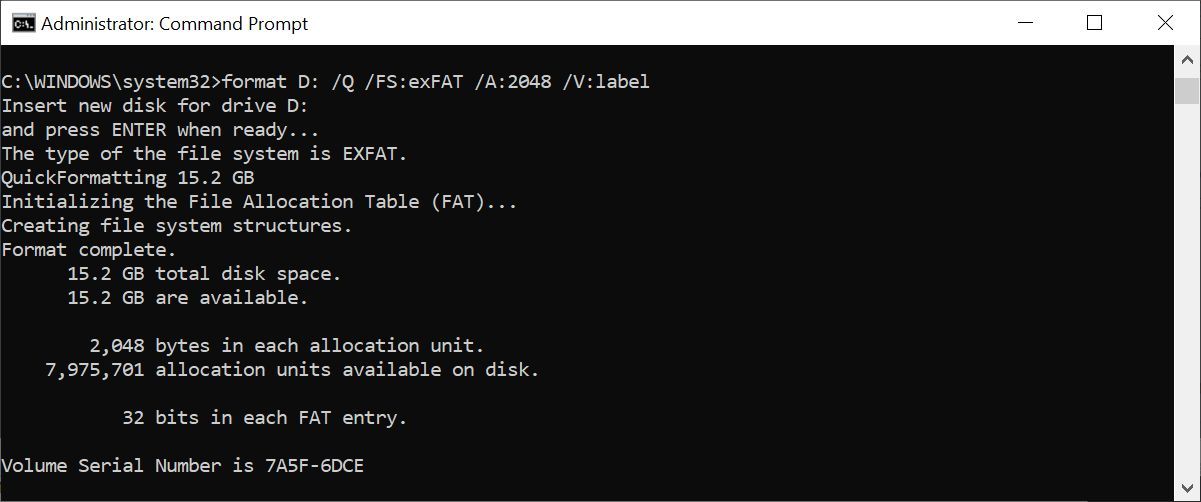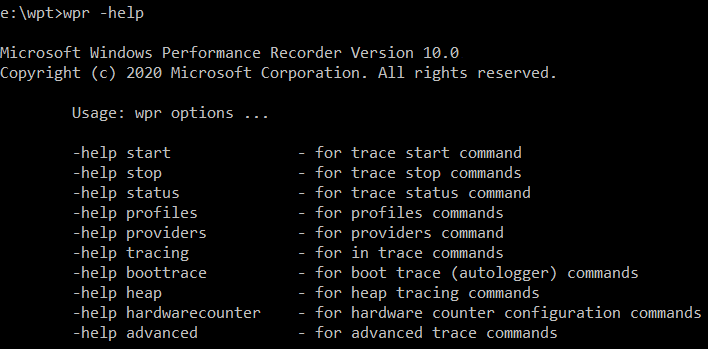

- #SIMPLE COMMAND PROMPT COMMANDS FULL#
- #SIMPLE COMMAND PROMPT COMMANDS SOFTWARE#
- #SIMPLE COMMAND PROMPT COMMANDS WINDOWS#
To copy a file, simply specify the source file and destination – copy SOURCE DESTINATION. Hit exit when done, and this will close the current session.įILE ACTIONS 7) COPYING FILES D:\http>copy README.txt d:\http\temp When the screen gets too messy, use cls to clear the screen.įrom the command prompt, we can also launch various apps.Ĭaptain Obvious to the rescue again. to go up one level, or cd/ to go all the way back to the root of the current drive.
#SIMPLE COMMAND PROMPT COMMANDS FULL#
For the above example, we can just type out cd h and press tab to cycle through the list of folders starting with “h”.Īnother way to use the cd command is to enter a full file path. There is one trick here – We don’t actually need to type out the full folder name. Next, we have the cd command… Should be Captain Obvious, changes the current directory. To list the contents of the current folder, use the dir command. If you want to change the current directory to another drive, simply enter the drive letter – For example d: or e.Ģ) LIST CONTENTS OF CURRENT DIRECTORY D:\>dir

That is, the current location is at the C:\ drive, inside the default Users\NAME folder. This should pretty self-explanatory, it is your “current directory”. When the command prompt is launched, all that is staring back is a C:\Users\NAME.
#SIMPLE COMMAND PROMPT COMMANDS WINDOWS#
To find information about a specific command, in the following A-Z menu, select the letter that the command starts with, and then select the command name.Now that you have launched the command line, here are some of the basic commands to know.īASIC NAVIGATION 1) CHANGING THE CURRENT DRIVE Microsoft Windows User-specified settings take precedence over computer settings, and command-line options take precedence over registry settings. If name completion is enabled with the /F:ON parameter and switch, the two control characters used are Ctrl-D for directory name completion and Ctrl-F for file name completion. You can also enable or disable file and directory name completion per instance of a Command shell by running cmd.exe with the parameter and switch /F:ON or /F:OFF. The type of value for this registry entry is REG_DWORD, and can be specified by hexadecimal or decimal value. To disable a particular completion character in the registry, use the value for space (0x20) as it is not a valid control character. See virtual key codes for a complete list. Set these values to that of the control character you wish to use. HKEY_LOCAL_MACHINE\SOFTWARE\Microsoft\Command Processor\PathCompletionChar HKEY_LOCAL_MACHINE\SOFTWARE\Microsoft\Command Processor\CompletionChar HKEY_CURRENT_USER\SOFTWARE\Microsoft\Command Processor\PathCompletionChar HKEY_CURRENT_USER\SOFTWARE\Microsoft\Command Processor\CompletionChar Before making the following changes to the registry, you should back up any valued data on the computer. Incorrectly editing the registry may severely damage your system. You can run both Windows Commands and PowerShell cmdlets in PowerShell, but the Command shell can only run Windows Commands and not PowerShell cmdlets.įor the most robust, up-to-date Windows automation, we recommend using PowerShell instead of Windows Commands or Windows Script Host for Windows automation.Ī reference of exit and error codes for Windows Commands can be found in the Debug system error codes articles that may be helpful to understanding errors produced. Cmdlets are similar to Windows Commands but provide a more extensible scripting language. PowerShell was designed to extend the capabilities of the Command shell to run PowerShell commands called cmdlets. Scripts accept all commands that are available at the command line. You can perform operations more efficiently by using scripts than you can by using the user interface. For more information, see cscript or wscript. With Windows Script Host, you could run more sophisticated scripts in the Command shell.

The Command shell was the first shell built into Windows to automate routine tasks, like user account management or nightly backups, with batch (.bat) files.
#SIMPLE COMMAND PROMPT COMMANDS SOFTWARE#
Each shell is a software program that provides direct communication between you and the operating system or application, providing an environment to automate IT operations. Windows has two command-line shells: the Command shell and PowerShell.

This set of documentation describes the Windows Commands you can use to automate tasks by using scripts or scripting tools. All supported versions of Windows and Windows Server have a set of Win32 console commands built in.


 0 kommentar(er)
0 kommentar(er)
